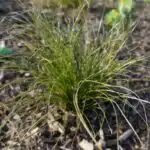The New Zealand Tea Tree, also known as Leptospermum scoparium, is a versatile and hardy evergreen shrub that is native to both Australia and New Zealand. It is highly valued for its vibrant blooms, which range from white to pink and red, as well as its ability to thrive in a variety of growing conditions. As a horticulturalist or plant expert, it is important to understand the proper care and maintenance required to ensure healthy growth of this stunning plant.
In this article, we will explore the various aspects of growing and caring for the New Zealand Tea Tree. From selecting the right soil type to pruning techniques and fertilization methods, we will provide you with all of the necessary information needed to cultivate a thriving plant. Whether you are looking to add color to your garden or simply want to learn more about this unique species, our guide will equip you with the knowledge and skills needed to successfully grow and care for the New Zealand Tea Tree.
Understanding The New Zealand Tea Tree
The New Zealand Tea Tree, also known as Leptospermum scoparium, is a shrub or small tree that is native to New Zealand and southeastern Australia. It belongs to the Myrtaceae family and has been cultivated for its ornamental value since the 1800s. This plant is widely known for its striking flowers, which can range from white to pink, red, or purple.
One of the benefits of growing New Zealand Tea Tree is its versatility in landscaping. It can be planted as a specimen plant, hedge or screen, and can thrive in both coastal and inland areas. The tea tree’s dense foliage also provides good shelter for birds and other wildlife. However, there are some drawbacks to consider before planting this species; it can be invasive in some areas and requires regular pruning to maintain its shape.
The conservation of natural habitats where the New Zealand Tea Tree grows wild has become increasingly important due to threats such as urbanization and climate change. While this species is not currently listed as endangered or threatened, there are efforts underway to preserve its natural habitat and genetic diversity through seed banking programs. As a horticulturalist or plant enthusiast, it’s important to consider these factors when choosing plants for your garden or landscape design. In the next section, we will discuss the ideal climate conditions required for growing healthy New Zealand Tea Trees.
Climate And Growing Conditions
The New Zealand Tea Tree, also known as Leptospermum scoparium, is a hardy evergreen shrub that thrives in ideal climates. These plants are native to New Zealand and Australia but can be grown in other parts of the world with similar climates. The ideal climate for this plant is a temperate region with mild winters and warm summers.
The New Zealand Tea Tree requires well-draining soil that is slightly acidic to neutral. It prefers soil that is sandy or loamy with good drainage. Avoid planting it in clay soil or any soil that retains water for too long as it can cause root rot. If your soil does not meet these requirements, you can amend it by mixing in sand or perlite to improve drainage.
To ensure proper growth and health of your New Zealand Tea Tree, it’s essential to select an appropriate location with plenty of sunlight and good airflow. It’s best to avoid planting them in areas that are prone to frost damage or strong winds. By providing ideal growing conditions, you’ll enjoy a beautiful and healthy plant for years to come.
Moving on from understanding the ideal climates and soil preferences for the New Zealand Tea Tree, let’s focus on how you can prepare the soil for planting.
Soil Preparation And Planting
After understanding the climate and growing conditions necessary for New Zealand tea tree, the next crucial step is to prepare the soil and plant the tree correctly. Before planting, it’s essential to ensure that the soil is rich in nutrients, well-draining, and slightly acidic. You can check the pH levels of your soil using a testing kit and make any necessary adjustments.
To prepare the soil, start by removing any weeds or debris from the planting area. Then dig a hole that is twice as wide as the root ball of your New Zealand tea tree. Mix in compost or well-rotted manure with the soil you removed from the hole. This will help enrich your soil with nutrients vital for growth.
When planting your New Zealand tea tree, gently remove it from its container and loosen any tangled roots. Place it in the center of your prepared hole and backfill with soil until level with ground level. Water thoroughly to settle the soil around your new plant, taking care not to overwater as this can lead to root rot. With these proper planting techniques, you’ll give your New Zealand tea tree a strong foundation for healthy growth.
Transitioning into watering and irrigation techniques: Now that you have successfully planted your New Zealand tea tree using proper techniques, it’s time to focus on ensuring its continued growth by providing adequate water and irrigation techniques.
Watering And Irrigation Techniques
Let’s face it, watering your plants can be a tedious task. However, the New Zealand tea tree is not one to be neglected. It requires attention and care when it comes to watering. Drip irrigation is the preferred method of watering for this plant as it allows for slow and consistent water flow directly to the roots.
When it comes to watering frequency, there is no set rule of thumb. It depends on several factors such as soil type, climate, and season. As a general guideline, you should aim to keep the soil moist but not excessively wet. Overwatering can lead to root rot which can ultimately kill the plant.
By using drip irrigation, you can ensure that your New Zealand tea tree receives adequate moisture without risking overwatering. This method also helps conserve water by reducing evaporation and runoff. Remember to monitor the soil moisture regularly and adjust watering frequency accordingly.
Moving forward with growing your New Zealand tea tree, pruning for optimal growth is essential.
Pruning For Optimal Growth
Proper pruning techniques are necessary to ensure optimal growth and health of the New Zealand tea tree. Regular pruning helps maintain its natural shape, promotes new growth, and removes dead or diseased branches. However, incorrect pruning can cause irreparable damage and must be avoided.
Timing of pruning is critical. Prune during the winter dormant season when the plant is not actively growing. This will minimize stress on the plant and allow it to recover quickly once spring arrives. Additionally, avoid pruning during periods of extreme heat or cold as this can shock the tree and hinder its growth.
When pruning, use clean and sharp shears to make clean cuts at a 45-degree angle just above a healthy bud or branch junction. Avoid leaving stubs as these can attract pests and diseases. Start by removing any dead or diseased wood followed by crossing branches that rub against each other. Lastly, thin out overcrowded areas to promote better air circulation within the tree canopy.
Transition into subsequent section about fertilization methods:
Now that we have covered proper pruning techniques, let’s move on to discussing fertilization methods for the New Zealand tea tree.
Fertilization Methods
To ensure that your New Zealand tea tree thrives, fertilization is essential. There are two different types of fertilizers to choose from: organic and synthetic. Organic fertilizers are derived from natural sources such as compost and manure, while synthetic fertilizers are chemically engineered.
Organic fertilization is the preferred method for many gardeners as it provides a slow release of nutrients over an extended period. This method also improves soil structure by increasing its water-holding capacity and overall health. Furthermore, organic fertilization is environmentally friendly and reduces chemical pollution in the soil.
On the other hand, synthetic fertilization is quicker acting and provides more precise nutrient balance to plants. However, this type of fertilizer has some drawbacks as it can damage soil structure and microorganisms living in the soil over time. It also poses environmental risks due to the presence of chemicals.
Table: Comparison between Organic Fertilization and Synthetic Fertilization
| Criteria | Organic Fertilization | Synthetic Fertilization |
|---|---|---|
| Nutrient Release | Slow release | Quick release |
| Soil Health | Improves | Damages |
| Environmental Impact | Minimal | High |
To ensure optimal growth and care for your New Zealand tea tree, choosing the right type of fertilizer is crucial. Both organic and synthetic methods have their advantages and disadvantages, so it’s important to weigh up what’s most important to you as a gardener. By carefully selecting a fertilizer that suits your needs, you can help your plant thrive for years to come.
Moving on to propagation techniques…
Propagation Techniques
New Zealand tea tree can be propagated through various methods, including air layering and root cuttings. Air layering is a simple propagation technique that involves creating roots on a stem while it is still attached to the parent plant. To do this, select a healthy branch and remove the bark from a small section of it. Apply rooting hormone to the exposed area and wrap it with moist sphagnum moss. Cover the moss with plastic wrap and secure it in place. After several weeks, roots will develop, and you can cut the new plant from the parent.
Root cuttings are another propagation technique that involves taking stem cuttings with several nodes and rooting them in soil or water. Cuttings should be taken from healthy plants during their dormant season, typically in winter or early spring. Remove all leaves except for two or three at the top of each cutting. Dip the bottom end in rooting hormone, then plant it in a pot filled with well-draining soil mix. Keep the soil moist but not waterlogged until new growth appears.
Both air layering and root cuttings are effective methods for propagating New Zealand tea tree. However, keep in mind that success rates can vary depending on factors such as temperature, humidity, and light exposure. With proper care and attention to detail, you can successfully propagate your own New Zealand tea trees for yourself or others.
Moving forward to ensuring healthy growth of your New Zealand tea tree requires knowing pests and diseases to watch out for. These include scale insects that suck sap from leaves causing yellowing or leaf drop; spider mites that create webbing on leaves causing discoloration; fungal diseases like rust which causes orange-red spots on foliage; bacterial infections like fire blight which cause wilting of shoots; among others. Knowing these common pests and diseases will help you take prompt action before they cause significant damage to your plants.
Pests And Diseases To Watch For
As with any plant, pests and diseases can pose a threat to the health and vitality of New Zealand tea trees. To prevent infestations or infections, it is important to take preventative measures such as regular pruning, proper watering practices, and ensuring adequate sunlight. However, if an issue does arise, there are treatment options available.
One common pest that affects New Zealand tea trees is the tea tree beetle. These beetles can cause significant damage to the leaves and stems of the tree. To prevent infestations, it is important to keep the area surrounding the tree free from debris and fallen leaves. If an infestation does occur, insecticidal soap or neem oil can be used as treatment options.
Another potential issue for New Zealand tea trees is fungal infections such as root rot or leaf spot. These infections can be caused by overwatering or poor drainage. To prevent these issues from occurring, make sure to plant in well-draining soil and avoid overwatering. Treatment options for fungal infections include removing infected areas and applying fungicides according to package instructions.
Now that we have discussed how to prevent and treat common pests and diseases for New Zealand tea trees, let’s move on to exploring some of the most popular varieties of this beautiful plant.
Common Varieties Of New Zealand Tea Tree
New Zealand tea tree is a popular shrub that comes in many different colors and varieties. One of the most common types is Leptospermum scoparium, also known as manuka or red tea tree. It grows up to 20 feet tall and has small, needle-like leaves that are fragrant when crushed. The flowers range from white to deep pink, and they bloom in the spring and summer.
Another popular variety of New Zealand tea tree is Leptospermum petersonii, or lemon-scented tea tree. As its name suggests, this plant has a lemony fragrance that makes it a popular choice for essential oils and aromatherapy products. Its leaves are long and narrow, with small white flowers that bloom in the summer.
One of the most unique features of New Zealand tea tree is its ability to adapt to different growing conditions. It can tolerate drought and poor soil, making it a great choice for xeriscaping or low-maintenance landscaping. In addition, some varieties like Leptospermum scoparium ‘Kea’ have a weeping habit that makes them ideal for hanging baskets or cascading over walls. With so many different colors and growth habits to choose from, there’s sure to be a New Zealand tea tree variety that fits your garden’s needs.
As we’ve seen, New Zealand tea tree is an incredibly versatile plant with many unique features. In the next section, we’ll explore some companion plants that can help enhance its beauty and promote healthy growth.
Companion Plants For New Zealand Tea Tree
New Zealand tea tree, also known as Leptospermum scoparium, is a popular evergreen shrub that is native to New Zealand and Australia. According to a study conducted by the University of Florida, this plant has been found to have antibacterial and antifungal properties due to the presence of manuka oil in its leaves. In addition to its medicinal properties, it has become a popular ornamental plant for gardens due to its attractive flowers and foliage.
Companion plants are essential in any garden as they can help improve soil quality, attract pollinators, and deter pests. When it comes to planting New Zealand tea tree, there are several companion plants that can help enhance its growth and overall appearance. Some of the most suitable companion plants for this shrub include lavender, rosemary, heather, sage, and thyme. These plants not only complement the fragrance of the New Zealand tea tree but also provide additional benefits such as attracting beneficial insects like bees and butterflies.
Benefits of companion planting with New Zealand tea tree go beyond aesthetics – it can also promote healthy soil conditions by fixing nitrogen levels in the ground. Lavender helps repel pests such as moths while sage prevents fungal growth in nearby plants. Thyme attracts predatory insects such as ladybugs that feed on aphids – one of the biggest threats to healthy garden growth. Overall, incorporating these companion plants into your garden layout will provide various benefits for both your New Zealand tea tree shrub and other surrounding flora.
Transition: While companion planting with other herbs has proven beneficial for the growth of new zealand tea tree shrubs, knowing how to utilize these plants is only one step towards optimizing their use in your garden. The next section discusses various uses of new zealand tea tree that go beyond just aesthetic appeal or medicinal properties.
Uses Of New Zealand Tea Tree
New Zealand Tea Tree, also known as Leptospermum scoparium, is a popular plant with a variety of uses. One of the most well-known uses of this plant is for the production of tea tree oil. Tea tree oil is extracted from the leaves and branches of the New Zealand Tea Tree and has a range of medicinal properties. It is commonly used as an antiseptic, anti-inflammatory, and antifungal agent.
The medicinal properties of tea tree oil make it a valuable addition to any first aid kit. When applied topically, it can help to treat acne, insect bites, cuts and scrapes, and even athlete’s foot. Its antibacterial properties also make it an effective treatment for minor skin infections. In addition to its use in traditional medicine, tea tree oil is also found in many cosmetic products such as shampoos and soaps.
New Zealand Tea Tree is not only useful for its essential oil but also makes an attractive ornamental plant. It is often grown for its colorful flowers which bloom profusely in late spring and early summer. The plant can grow up to 20 feet tall under favorable conditions making it ideal for hedges or screens.
In summary, New Zealand Tea Tree has many uses beyond just being an attractive plant. Its essential oil has been used for centuries for its medicinal properties while its ornamental qualities make it a popular landscaping choice. In the next section, we will explore how to properly harvest and store this versatile plant.
Harvesting And Storage
Harvesting and Storage: As the New Zealand tea tree grows, it will eventually produce flowers that bloom in a stunning display of color. The best time to harvest these flowers is when they are fully developed but have not yet opened. This ensures maximum potency and flavor. It is important to use sharp pruning shears to avoid damaging the plant, as well as to remove only a small portion of the plant at one time.
There are several different techniques for harvesting New Zealand tea tree flowers. One popular method is to cut whole branches from the plant and allow them to dry completely before removing the flowers. Another technique involves plucking individual flowers by hand and allowing them to dry on a flat surface. Regardless of the method used, it is important to handle the flowers gently and avoid crushing or bruising them.
Once harvested, New Zealand tea tree flowers should be stored in an airtight container away from direct sunlight and moisture. This helps preserve their flavor and potency over time. If stored properly, dried flowers can last up to six months before losing their effectiveness. To ensure maximum freshness, it is recommended that you store your dried New Zealand tea tree flowers in the refrigerator or freezer until ready for use.
Transition: Now that we have discussed how to harvest and store your New Zealand tea tree, you may be wondering whether this plant is best suited for indoor or outdoor growing environments. Let’s explore this topic further in the next section.
Indoor Vs. Outdoor Growing
When it comes to growing New Zealand tea trees, one of the first decisions you’ll need to make is whether you want to grow them indoors or outdoors. Indoor growing is ideal for those with space limitations, as these trees can thrive in a variety of container sizes. However, they do require plenty of sunlight, so you’ll need to ensure that they’re placed in a well-lit area.
Outdoor growing, on the other hand, allows your New Zealand tea tree to get all the natural light it needs. These trees prefer full sun and can even tolerate some drought conditions once established. However, keep in mind that they may not be suitable for extremely cold climates and will need protection during frost spells.
Ultimately, the decision between indoor and outdoor growing will depend on your specific circumstances and preferences. Consider factors such as available space, lighting requirements, climate conditions, and personal taste when deciding where to plant your New Zealand tea tree. With proper care and attention, this versatile plant can thrive in either environment.
For those who are experiencing difficulty with their New Zealand tea tree growth, troubleshooting common issues is essential. Whether it’s pest infestations or nutrient deficiencies causing problems for your plant growth, identifying the issue early on can make all the difference in saving your tree from further damage. In the next section, we’ll explore some common issues that arise when caring for New Zealand tea trees and provide effective solutions for each problem that may occur.
Troubleshooting Common Issues
While growing and caring for new zealand tea tree can be a rewarding experience, there are common issues that gardeners may face. Identifying symptoms of these problems early on can help prevent the spread of damage to other parts of the plant or nearby plants. One common issue is leaf discoloration, which can indicate a lack of nutrients or an overabundance of water in the soil. Another symptom to watch out for is wilting, which could be a sign of underwatering or root rot.
Prevention methods for these issues include maintaining proper watering habits and monitoring nutrient levels in the soil. It is important to water new zealand tea tree deeply but infrequently, allowing the top layer of soil to dry out before watering again. Additionally, using a well-draining soil mix and avoiding over-fertilization can help prevent nutrient imbalances that lead to discoloration.
By taking preventative measures and identifying symptoms early on, gardeners can ensure successful growth and care for their new zealand tea tree. In addition to proper watering habits and nutrient management, it is important to provide adequate sunlight exposure and prune regularly to maintain desired shape and size. With these tips in mind, gardeners can enjoy the beauty and benefits of this unique plant species.
Tips For Successful Growth And Care
To ensure successful growth and care of New Zealand tea tree, there are several tips that plant enthusiasts must follow. First, when planting the tree, it is essential to consider its growing conditions. It requires full sun exposure and well-draining soil to thrive. The soil should be slightly acidic, with a pH between 5.5 and 6.5, which can be achieved by adding organic matter such as compost or peat moss.
Container gardening is an excellent option for those who do not have sufficient space or want to grow the tea tree indoors. When container gardening, choose a pot that is at least 12 inches deep and wide enough for the root ball to fit comfortably. Ensure that the pot has sufficient drainage holes to prevent waterlogging, which can lead to root rot.
Like all plants, New Zealand tea trees may face pest problems such as mites or scale insects. To control these pests, use an insecticidal soap spray or neem oil every two weeks during the growing season. However, before using any pesticide or insecticide product, read and follow the instructions carefully to avoid damaging the plant or exposing yourself and others to harmful chemicals.
Incorporating these tips into your care routine will help ensure that your New Zealand tea tree thrives in its environment. By following proper planting techniques and maintaining healthy growing conditions while controlling potential pest issues through safe methods like using insecticidal soap spray or neem oil sprays – you can enjoy this beautiful plant in your garden or home for years to come!
Frequently Asked Questions
How Do I Know If My New Zealand Tea Tree Is Getting Enough Sunlight?
New Zealand tea tree is a popular plant for many gardeners due to its unique appearance and benefits. As a horticulturist, it is important to understand the sunlight requirements of this plant to ensure optimal growth and health. One interesting statistic is that New Zealand tea tree requires at least six hours of direct sunlight each day to thrive. This makes it essential to place the plant in an area with ample sunlight exposure. Additionally, pruning techniques play a crucial role in maintaining its shape and promoting better blooming. Regular pruning helps prevent overcrowding and ensures adequate air circulation, which can prevent fungal infections from developing. By following these tips on sunlight requirements and pruning techniques, you can enjoy healthy and beautiful New Zealand tea trees in your garden.
Can New Zealand Tea Tree Be Grown In Pots Indoors?
Indoor requirements for growing New Zealand tea tree in pots depend on several factors, including the container size, soil type, and light exposure. The ideal container size should provide enough space for the roots to grow without being cramped or waterlogged. A well-draining soil mix with added perlite or sand can help prevent waterlogging while allowing air circulation around the roots. Adequate sunlight is also essential for healthy growth, so placing the pot near a bright window or using artificial lights can ensure sufficient light exposure. While indoor growing may require more attention to these factors, it can be a great way to enjoy this beautiful plant if outdoor conditions are not suitable.
How Often Should I Fertilize My New Zealand Tea Tree?
The New Zealand Tea Tree is a hardy plant that requires minimal fertilizer to thrive. However, it is important to ensure that the plant receives adequate nutrients to promote healthy growth and flowering. Fertilizer frequency should be based on the specific nutrient requirements of the plant, as well as the type of fertilizer being used. A slow-release fertilizer can be applied once every three to four months during the growing season, while a liquid fertilizer can be applied every two weeks during active growth. It is important to avoid over-fertilizing, as this can lead to leaf burn and other issues. Regular soil testing can help determine whether additional nutrients are needed for optimal growth and health.
Is It Necessary To Cover My New Zealand Tea Tree During Extreme Weather Conditions?
New Zealand Tea Tree is a hardy plant that can withstand extreme weather conditions. However, in certain situations, it may be necessary to cover the plant to protect it from damage caused by heavy snow or frost. In such cases, covering the plant with a blanket or tarpaulin can help to shield it from the harsh elements. It is also important to ensure that the plant is well-pruned on a regular basis to promote healthy growth and prevent common pests and diseases from taking hold. Regular pruning helps to improve air circulation around the plant and reduce the risk of fungal infections. Common pests that affect this species include spider mites and scale insects, which can be controlled using insecticidal soap or neem oil. Overall, proper care and maintenance of New Zealand Tea Tree can help ensure its longevity and keep it looking beautiful for years to come.
Can I Use The Leaves Of My New Zealand Tea Tree For Tea-Making Purposes?
The New Zealand Tea Tree, known for its beautiful flowers and aromatic leaves, can be harvested for tea-making purposes. When harvesting the leaves, it is important to choose those that are fully matured and have a healthy appearance. The leaves can be dried in a warm, well-ventilated area before use. Drinking tea made from New Zealand Tea Tree leaves has been found to provide numerous health benefits, including anti-inflammatory and antioxidant properties. As a horticulturalist or plant expert, it is important to emphasize the proper harvesting techniques to ensure maximum health benefits are obtained from this versatile plant.
Conclusion
New Zealand Tea Tree, also known as Leptospermum scoparium, is a wonderful addition to any garden or indoor space. As a plant expert, it is important to ensure that this species receives enough sunlight to thrive. Look for leaves that are bright green and not droopy, which indicate sufficient exposure to light. If the foliage appears dull or yellowed, move the plant to a sunnier location.
Although New Zealand Tea Tree can be grown in pots indoors, it requires ample space and drainage for optimal growth. Fertilizing once every two weeks during the growing season will help promote healthy roots and foliage. During extreme weather conditions such as frost or high winds, consider covering your plant with a protective cloth or plastic.
Additionally, while the leaves of this species may be used for tea-making purposes due to their antibacterial properties, it is important to avoid consuming large quantities as they contain a natural compound called leptosperin which can cause liver damage in some individuals.
In conclusion, New Zealand Tea Tree is a stunning plant that requires attention and care from its horticulturalist. By ensuring adequate sunlight exposure, providing proper fertilizer and protecting against extreme weather conditions, you can cultivate a healthy plant that adds beauty and interest to your living space. Let its vibrant green foliage and delicate white or pink flowers transport you to the lush landscapes of New Zealand.
Image Credits
- “White New Zealand Tea Tree” by Chris Hunkeler (featured)





























